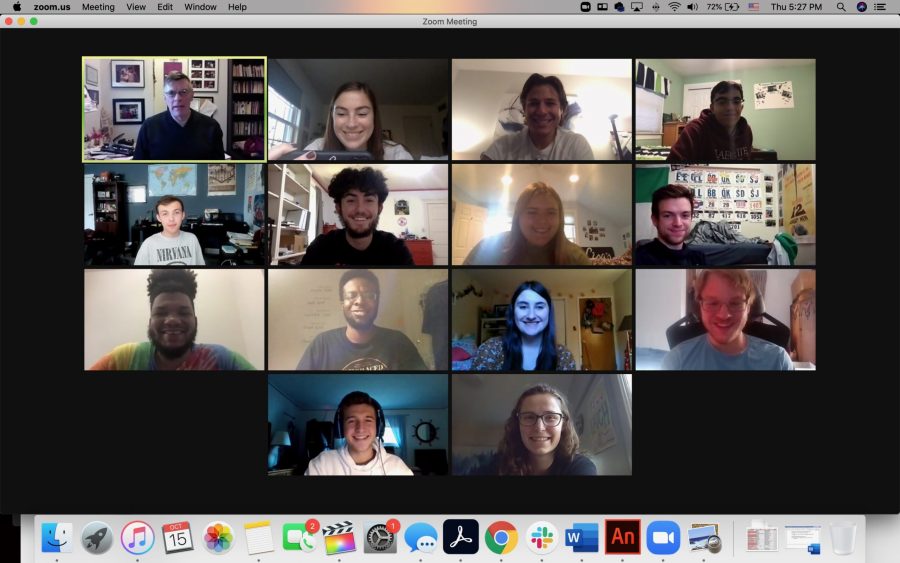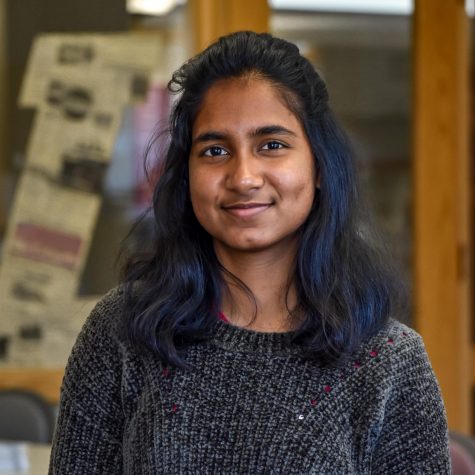Lafayette theater students have been revolutionizing the meaning of theater all semester through a number of pre-recorded Zoom plays and even a musical. Now, they are delivering their message using only their voices through the radio show “You Are There! Native Americans at the first Thanksgiving.”
The show premiered on Nov. 5 and is available to listen to until Nov. 25 on the theater department website. Written and directed by theater professor Michael O’Neill, the radio play is inspired by the late 1940s radio program “You Are There!” which presented historical events as they would have been reported by news broadcasters.
This revival of the radio program is set in Plimoth Plantation in October 1621 during the first Thanksgiving, offering a new take on the portrayal of this holiday’s origin and unveiling the atrocities committed by the white settlers against the Native Americans at the time.
“So much misinformation and fiction surround this event that it is easy to understand why ‘You Are There’ shied away from broadcasting an episode examining this American holiday and its problematic legacy,” O’Neill wrote in his director’s note on the website.
“That was not really a part of the American fabric until about 1900…Nobody ever did a ‘You are There!’ about the first Thanksgiving. Maybe that’s because nobody wants to tell what actually happened,” O’Neill added in an interview with The Lafayette.
Based on historical facts, real Native American accounts and original statements from diaries of historical figures, the play seeks to “show us what kind of myths surround our idea about the holiday,” which is considered a day of mourning by many Native American tribes, according to O’Neill.
“People often talk about the great original sin of the United States being slavery,” O’Neill said. “Yes, but I would say there’s another original sin, which is the white colonizers systematically destroying the Native Americans and their various cultures.”
Cast member Lisa Green ’24 emphasized that the show is an important conversation starter.
“I certainly grew up having learned the wrong version of the story,” she said.
The play’s topic raises another question: how do non-Indigenous people represent the Native American story while remaining respectful and true to the heritage?
For O’Neill, this question poses a dilemma. He explained that he ideally would not cast a non-Indigenous actor for an Indigenous role, but the lack of students at the college who identify as Native American that he knows of has proven to be a barrier.
“Which is more beneficial to our conversations? Should we just not do these plays because we don’t have any students who can play these roles?” O’Neill asked. “Or do some of these plays, because of what [they] are about, [bring a] message into the conversation, as long as we treat the characters with respect and try to understand their point of view with the caveat the audience understands these people are not Native Americans.”
Stage manager Lizzie Gumula ’22 expressed her thoughts on the experience of telling Indigenous stories.
“I think it’s been a great initiative on college theatre’s part to start telling stories of people other than just the old white male playwrights…I really enjoyed having those open conversations about how we can tell stories of Indigenous people when we didn’t have Indigenous people in the cast,” Gumula said.
On the topic of representation in theater in general, Gumula said that the play is meant to “educate both ourselves and the Lafayette community at large.”
“[The play] is historical, so it’s really like asking a lot of questions and examining our own place in that narrative and how our privilege has affected that,” she said.
While students may have gotten used to the reality of virtual theater for now, a pre-recorded remote broadcast is a new kind of challenge for students involved.
According to O’Neill, keeping listeners’ attention through only sound presents a number of different challenges as compared to a live play where understanding is aided by a large number of visual cues because “we don’t listen very much as a people.”
Gumula explained that the cast rehearsed and recorded over Zoom. Instances where actors had to sing or speak in unison were independently recorded on Audacity and layered by sound designer Tim Frey.
Furthermore, building a connection as a cast has also been difficult in a virtual semester.
“A lot of theatre connections and community building is made off-stage…and personally that’s kind of what I’m missing most from this semester…When you log on to Zoom, there’s this idea that I’m logging onto an obligation and when it’s over, you’re obligated to leave,” Gumula said.
A second and final radio play of the semester, “The Man Who Came to Dinner” will be streamed on December 9 and December 23 at 7:30 p.m.























































































































